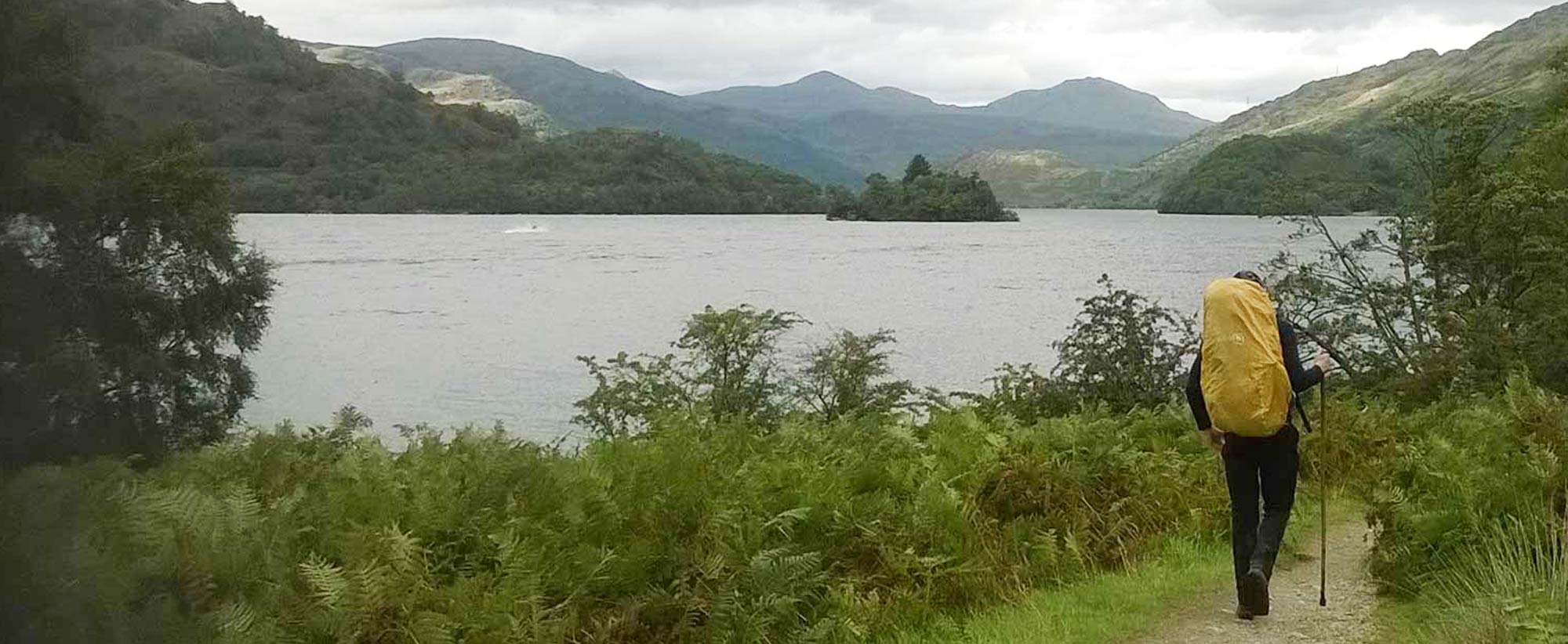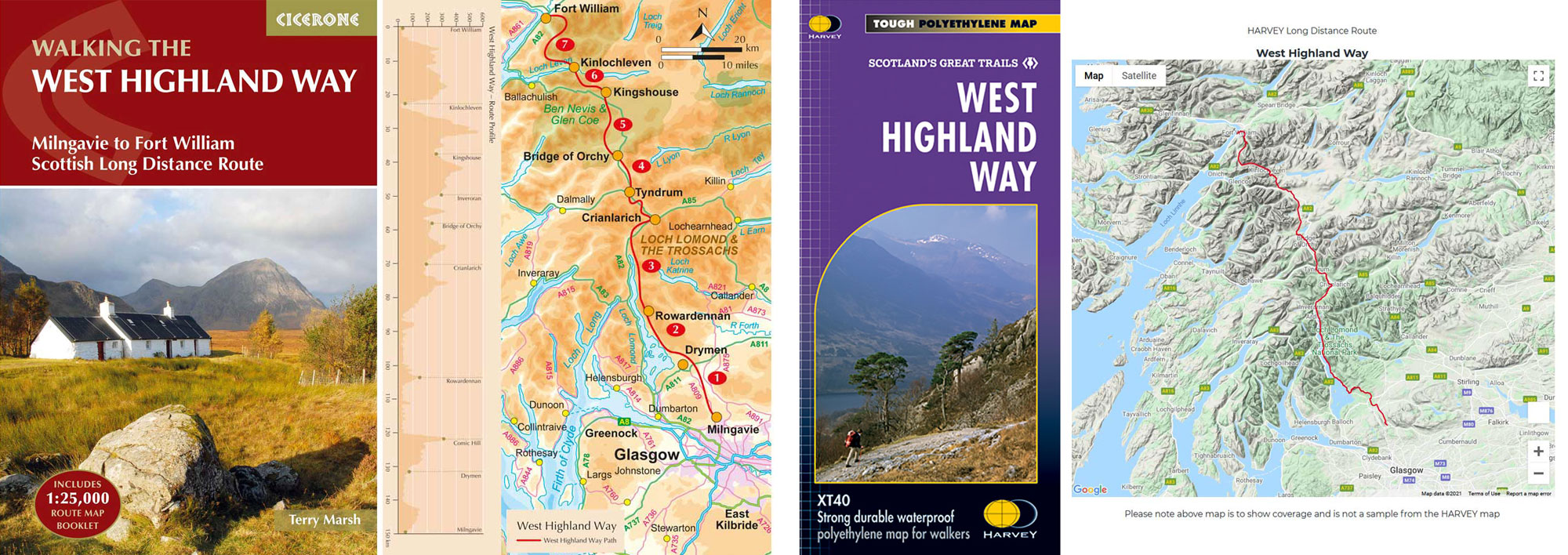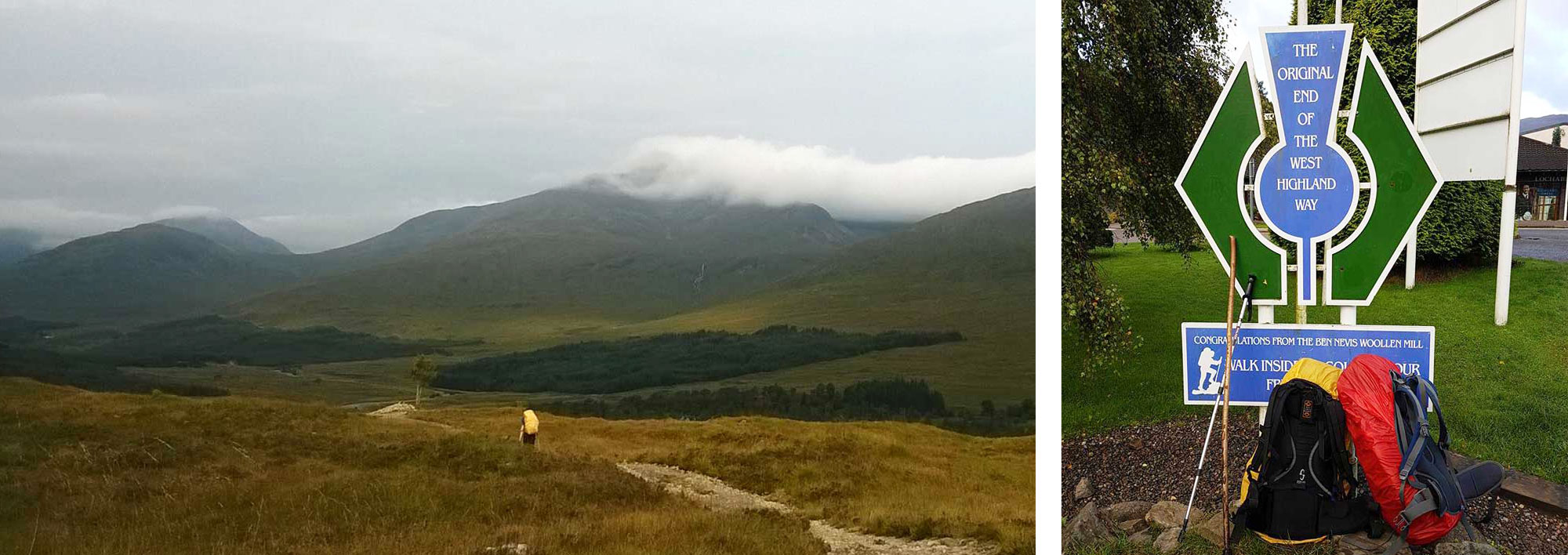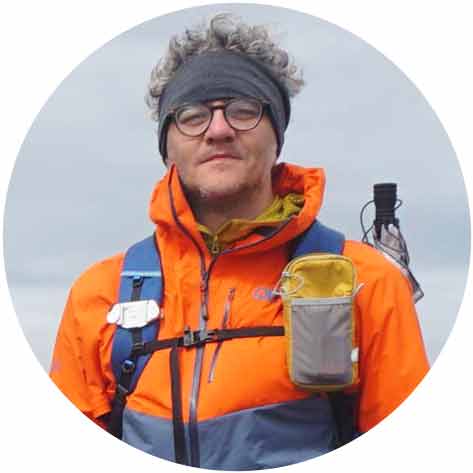Guide to The West Highland Way
Posted by Andy Neil on Aug 09, 2022

Intro and route history
The West Highland Way, or simply The Way, is a 96-mile-long distance walk that is usually tackled from south to north. It is arguably the most popular long-distance trail in the UK, completed by approximately 36,000 walkers a year. In contrast to the Coast to Coast, another popular trail, which is only completed by about 10,000. By no means is the trail busy, it’s still a wonderfully peaceful and tranquil walk, but it does mean that, as opposed to some of the less trodden national trails, it does have more facilities dedicated to hikers. There are plenty of cafes, campsites, and camping shops to resupply gas and food, as well as a lot of “trail magic” i.e., people who go out of their way to provide snacks and water along your journey. Due to the amenities, it is often people’s first experience with long-distance walking. It is usually completed in 7 to 8 days, but of course, can be completed quicker or slower depending on your pace.
The Way was opened in 1980 and was Scotland’s first long-distance walk, starting in the lowlands of Milngavie, just outside of Glasgow, the trail continues north into the Highlands and ends at the foot of the great Ben Nevis, in fort William.
The route
The Way is traditionally walked from south to north. The beginning of the journey is comparatively easy, which prepares you for the more challenging hiking towards the end of the trail. This doesn’t mean all of the first few days are a breeze, the Loch Lomond stretch of the walk is infamous for its undulating path, which can even force you to do a bit of scrambling over the roots and rocks. Walking from the lowland into the highland, the trail takes in a huge variety of scenery, from the idyllic countryside to loch shores and into rugged highlands. The path is made up of ancient drover’s roads, military roads dating to the Jacobite uprisings, and old coaching routes. The walking is generally easy, but predominantly gravel, so this should be taken into consideration when choosing footwear. I would always favour a trail running shoe over a boot on this trail.
The Way is phenomenally well marked, so those of you who are not the best navigators will still find this trail doable. We still recommend taking a map and guidebook, not just to keep you going in the right direction, it can really help you immerse yourself in the history and geology of the epic landscape you are walking through. Our recommendations are the Cicerone “The West Highland Way” book and the Harvey Maps Trail Map XT40 - West Highland Way as well as a GPS map on your phone.

Getting to & from the trail
The simplest way to arrive at the trailhead is by public transport. The train from Glasgow to Milngavie is a short and simple journey, it’s also simple enough to take the train back from Fort William to Milngavie or right back to Glasgow.
There are also regular busses from Glasgow to Milngavie and from Fort William back to Glasgow. The bus service stops at a few locations along the trail; Inverarnan, Crianlarich, Tyndrum, Bridge of Orchy, Glen Coe, and Ballachullish. So, if you need to call off your hike, or are breaking the journey up into sections it’s relatively easy to get back to civilisation.
If traveling by car, the Milngavie railway station acts as an unofficial car park for the start of the walk. It has CCTV coverage and is just along the road from the police station, However, it’s a good idea to pop in the police station and give them your registration and a rough outline of how long you will be on the trail.
Midges!!
If you are planning to attempt your west highland way journey in the months between June and August, insect protection is vital. The Scottish midges are out in force at this time of year and can seriously impact on your enjoyment of this wonderful trail. However, midges aren’t the only insect that can cause problems on the trail, ticks are not as notorious but can be far nastier as they carry Lyme disease. It is therefore recommended to take some protection in the form of a repellent, tick removal card, and a head net. We have a dedicated page for insect repellent here https://ultralightoutdoorgear.co.uk/insect-protec... but you will definitely need some Smidge, a net, Coghlans No-See-Um Headnet, and a Smidge Quick Untick Card

When to walk
The ferocity and abundance of midges is enough to put people off attempting the walk in the height of summer. Many, myself included, plan their trips to avoid these times, therefore May and September are two of the most popular times to attempt the walk.
Wild camping
One of the joys of walking in Scotland, and personally, one of the main draws to hiking in Scotland, is the ability to wild camp along the trail. This gives you a much deeper connection to nature and to the trail itself. It’s one of the main reasons why many travel the West Highland Way. As always, it is best to stick to the practice of “pitch late leave early” and always Leave No Trace! I would discourage lighting a fire, but it is permittable. Ensure it’s done safely and you aren’t creating any horrid scorch marks on this beautiful environment.
There is a caveat to wild camping this route, from the 1st of march to the 30th of September camping along the banks of Loch Lomond is restricted. You can still camp along the banks but a permit is required, which you can apply for here https://www.lochlomond-trossachs.org/things-to-do... it only costs £4. The restrictions are in place to prevent ecological damage.
Accommodation
For those who don’t want to wild camp, the West Highland Way is littered with B&Bs, bunkhouses, hostels, and hotels. Far too many for me to list so I will point you in the direction of the official West Highland Way website
https://www.westhighlandway.org/location/
Resupplying
There are plenty of opportunities to resupply food, which massively reduces the weight you need to carry each day. However, I always carry a few dehydrated meals in case of emergency but here is a list of good places to replenish your dwindling supplies.
- Drymen - SPAR
- Balmaha - Village Shop at The Oak Tree Inn
- Beinglas Campsite
- Crianlarich - Londis Village Shop
- Tyndrum - Brodies Mini Market & The Green Welly Stop
- Kinlochleven - Co-op
Also, as I have mentioned, members of the public often leave out honesty boxes full of goodies for the hungry hikers. If you plan to take advantage of these make sure you have some spare change on you.
Carry a water filter
Carrying a water filter can also vastly reduce the weight you need to carry, being able to stop and fill water up directly from the source is much more convenient than planning your water resupply points from town to town. The further you get into the Highlands the cleaner and safer the water is but it is always recommended to filter any water. Our recommendation would be the Versa Flow Lightweight Water Filter but a list of our available filters is here.
Highlights
Conic Hill
It’s optional to ascend Conic Hill but it really is recommended. This is your first taste of the Highlands and what lies ahead of you. It isn’t much fun in bad weather, I would skip it, but on a fine day it’s one of the most beautiful places in all of Scotland. It also offers fantastic views across….
Loch Lomond
The largest body of water in the UK, Loch Lomond is also one of the most picturesque places in Scotland. However, as previously touched upon, the trail along the banks of this majestic loch is a slow and undulating one. If you are sticking to set distances per day, please take into consideration that if you usually walk at 5-6kmph you could be slowed to as little as 3-4kmph and this could affect your plans, so it’s worth taking into consideration.
The Glencoe Valley and the Kings House Hotel
Glencoe is a special place; this is the true highlands. The remoteness of this valley and the mighty mountains create a truly special atmosphere, and what’s more, there is a fantastic pub, Kings House, which dates back to the 17th-century Hotel and welcomes hikers.
Ben Nevis
Not actually on the West Highland Way, Ben Nevis towers above Fort William, our endpoint. If the weather is right and you feel your sore feet could cope with a few more miles, I can think of no better end than summiting the highest point in Britain.


|
||
 |
||
|
Andy Neil |
||
|
Andy has been a keen long-distance hiker and wild camping enthusiast since he completed the Cleveland Way in 2015. Since then, he has walked thousands of trail miles all over the UK and is an active member of the Wild Camping UK community, being an admin of the largest wild camping community on Facebook. He strongly advocates for responsible wild camping and believes it is important to leave no trace when camping in the wilderness. He joined the UOG team in 2021 and works as a website developer and content creator. |
||
